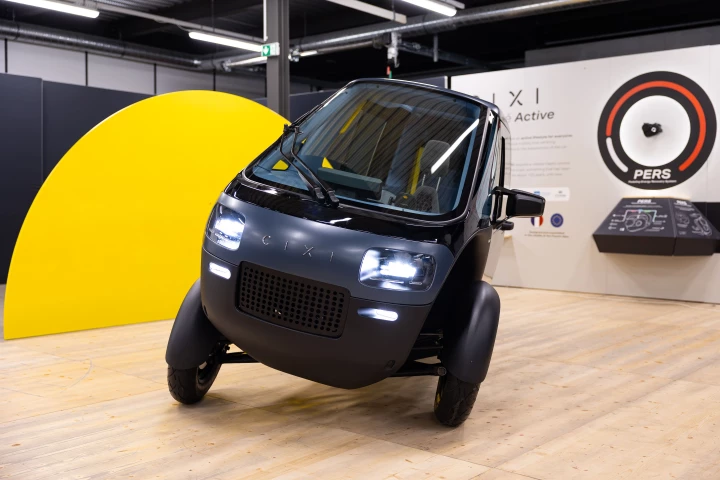For the most part, the 1,000 or so satellites orbiting the Earth are propelled by their initial thrust and our planet's gravitational force. But there is often the need to reposition satellites and for that, the craft need an assist from some kind of fuel. Some of those satellites use electrospray propulsion to jig around in space, a method that involves shooting liquid or ions through needle-thin nozzles. The force of the expulsion creates thrust in the opposite direction. But electrospray systems are notoriously delicate and prone to breakage, so researchers at Michigan Tech have developed a way to create such a system out of its own ferrofluid fuel source, making the nozzles constantly repairable.
First produced in a stable form by NASA's Steve Papell in 1964, ferrofluids are liquids that usually contain nano-sized particles of magnetite coated to prevent clumping. Because magnetite can be easily attracted by magnets, and can indeed become magnetic itself, ferrofluids are easily manipulated by magnets.
In its work, a team led by Brandon Jackson – Michigan Tech doctorate candidate in mechanical engineering – created a computational model of a microthruster array using what's called an ionic liquid ferrofluid, a liquid salt that has both magnetic and ionic properties (An ionic material is one that consists of a series of ions – positively or negatively charged particles – held together by electrostatic forces). They found that the fluid could be magnetically manipulated in such a way that it can be used to assemble its own tiny needle, which can heal itself or grow anew if it is damaged.
What's more, when electricity is applied to the fluid once the nozzle is created, it shoots out a stream of ions to create thrust. While this is similar to the way other ion propulsion systems work, in this case, the nozzles and the fluid are one and the same, so the material to repair them is always on hand.
The idea of using ferrofluids as thrusters came from Jackson's professor, L. Brad King, in 2012. King is the co-author of a paper about the findings recently published in Physics of Fluids.
"When we put a magnet underneath a small pool of the ferrofluid, it turns into a beautiful hedgehog structure of aligned peaks," said King. "When we apply a strong electric field to that array of peaks, each one emits an individual micro-jet of ions."
Everything old is new again
Back in the 60's, Papell originally created the fluids to solve a problem: How could you move fuel in a spacecraft that is free from the force of gravity? He reasoned that by putting tiny iron particles in the fuel, it could be drawn into the engine using magnets. The method was eventually abandoned as solid fuel propellants were developed. Then the method was floated again as a way to circulate a liquid around a spacecraft that could dissipate heat from the sun-facing side of a spacecraft to the colder side facing away from the sun. But again, as new technologies developed, it was abandoned.

Now, thanks to Jackson and King's research, it seems that the fluids might have a real shot at finding a home in space. But a fully functioning microthruster might take a while to develop. The next step for King's team will be to create a thruster containing 100 or more peaks that can all emit ions at the same rate to create even thrust.
"Often in the lab we'll have one peak working and 99 others loafing," King says. "Brandon's model will be a vital tool for the team going forward. If we are successful, our thruster will enable small inexpensive satellites with their own propulsion to be mass produced. That could improve remote sensing for better climate modelling, or provide better internet connectivity, which three billion people in the world still do not have."
In addition to those uses, Michigan Tech, which has a pending patent on the system, says the microthrusters could also be used in the production of pharmaceuticals, in nanofabrication, and in spectrometry – a measuring technique that relies on the behavior of ions.
Source: Michigan Tech






